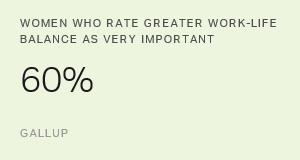What makes a great workplace? Is it pay, benefits? Is it too complex to understand? Traditionally, management believed that people will always dislike work, and when they are at work, they will always want to be somewhere else.
For years, organizations have attempted to measure and understand employee opinions in an effort to understand great workplaces. They have primarily discovered what a great workplace is not, versus what it is. Companies emerged from one consulting project after another with a list of "don'ts" or "quick fixes," without observing much sustainable change.
A few years ago, The Gallup Organization decided to initiate a multi-year research project to characterize a great workplace. Our first task was to define what "great" was. We decided that, while a great workplace is one where employees are satisfied with their jobs, it could not be considered "great" if it was not producing positive business outcomes. So we studied workplaces with an eye on four key outcome variables: employee retention, customer satisfaction, productivity and profitability.
We have made a number of key discoveries. In today's column we mention two:
Discovery #1: There are no great companies. There are only great workgroups.
Gallup has discovered that to truly understand the workplace, you must be closer than the 36,000 feet level. At cloud level, it is impossible to distinguish the best from the mediocre workgroups. Best practices of productive workplaces can only be observed at the workgroup level. Although there is a tremendous range in the characteristics of great workgroups, great workplaces in different companies have a great deal in common.
Discovery # 2: There appear to be 12 dimensions that consistently describe great workgroups.
It is easy to understand why companies have focused on situational issues, such as pay, parking, cafeteria discounts, etc. It's easier to influence these factors from an overall company strategy. But these factors do not really make a difference to the best, most productive employees and workgroups, and they don't explain job satisfaction.
While the 12 dimensions certainly do not explain everything, they consistently correlate with those workgroups that have higher employee retention, higher customer satisfaction, higher productivity, and higher profits. The dimensions do not include pay and benefits. That does not mean that pay and benefits are not important, but it does mean that they do not differentiate great workgroups from the rest.
In next week's column, we explore Item 1: "I know what is expected of me at work."
